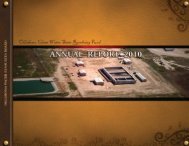Hazard Potential Classification Systems for Dams, FEMA 333
Hazard Potential Classification Systems for Dams, FEMA 333
Hazard Potential Classification Systems for Dams, FEMA 333
Create successful ePaper yourself
Turn your PDF publications into a flip-book with our unique Google optimized e-Paper software.
APPENDIX A - BACKGROUND<br />
CHARTER<br />
On September 12, 1994, a Task Group was chartered to review existing hazard potential<br />
classification systems, identify ambiguous terminology, and propose a modified or new system<br />
<strong>for</strong> the hazard potential classification of dams.<br />
METHOD<br />
The Task Group met on five occasions. Minutes of each meeting were recorded. The Task<br />
Group assembled copies of various Federal agency hazard potential classification systems, a<br />
copy of the Canadian Dam Safety Association <strong>Classification</strong> System, and a summary of state<br />
dam safety agency classification systems. Copies of these documents are included in Appendix<br />
B. The Task Group reviewed these documents, considered several options, and developed the<br />
<strong>Hazard</strong> <strong>Potential</strong> <strong>Classification</strong> System <strong>for</strong> <strong>Dams</strong>. The draft <strong>Hazard</strong> <strong>Potential</strong> <strong>Classification</strong><br />
System <strong>for</strong> <strong>Dams</strong> was submitted to the ICODS <strong>for</strong> review and comment. Comments were<br />
received in April 1996 and incorporated in the final Task Group report.<br />
DISCUSSION<br />
An early decision of the Task Group was to limit the work to the classification system and<br />
associated definitions. The Task Group would not consider issues related to future<br />
uses of the classification system, such as to establish design criteria, remediation schedules,<br />
inspection schedules, emergency action plan requirements, and/or spillway inflow design flood<br />
criteria. The work would be aimed at developing simple, unambiguous definitions <strong>for</strong> the<br />
proposed classification system.<br />
The Task Group reviewed existing classification systems and the history of their development.<br />
The existing systems generally evolved from the U.S. Army Corps of Engineers' Appendix D,<br />
"Recommended Guidelines <strong>for</strong> Safety Inspections of <strong>Dams</strong>" (ER 1110-2-106), dated September<br />
26, 1979. Although the original 1979 classification system was intended <strong>for</strong> limited use, i.e.,<br />
primarily to prioritize inspections <strong>for</strong> the 1979-1982 inspection program, it had evolved into<br />
multiple systems with various nomenclatures and specific design criteria. The resulting<br />
hodgepodge of systems has led to confusion in the dam safety community when dealing with<br />
multiple agencies and across state boundaries.<br />
The confusion begins with the names of the major classification categories that include: High-<br />
Significant-Low <strong>Hazard</strong> <strong>Potential</strong>, A-B-C, C-B-A, 1-2-3, and 3-2-1 <strong>for</strong> the corresponding names.<br />
In addition, various High <strong>Hazard</strong> <strong>Potential</strong> definitions contain an allowance <strong>for</strong> zero, few, 1 or<br />
more, or up to 10 human lives lost. This variety of terms, systems, and criteria leads to confusion<br />
in the dam safety community and, more importantly, to a lack of understanding by the general<br />
public.<br />
The Task Group reviewed existing systems <strong>for</strong> a number of categories. Although a few have up<br />
to nine categories, the great majority have three, as in the original 1979 system. In view of the<br />
long history of the basic 1979 three-category system, the associated regulatory base, and the<br />
Α−1


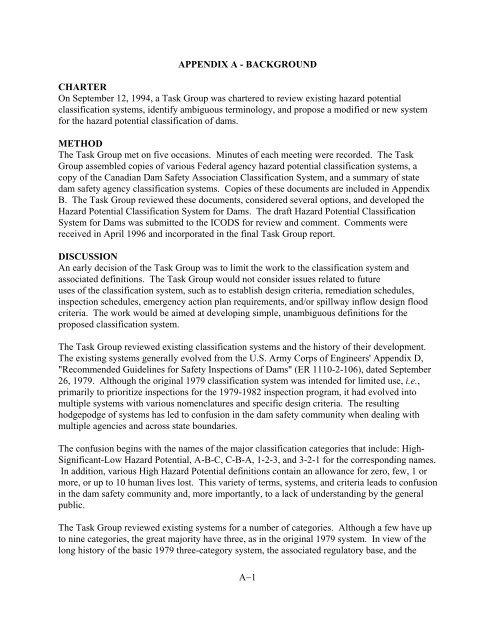


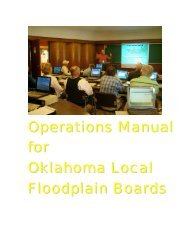
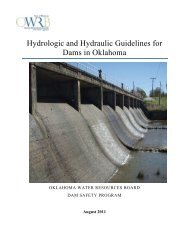


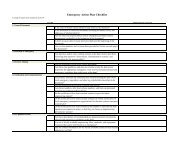


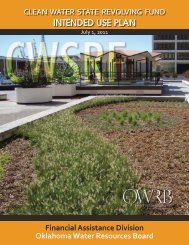

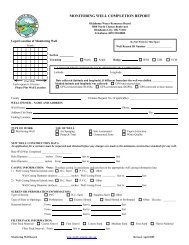
![A Commodity & a Resource [pdf] - Water Resources Board - State of ...](https://img.yumpu.com/42536671/1/190x143/a-commodity-a-resource-pdf-water-resources-board-state-of-.jpg?quality=85)

